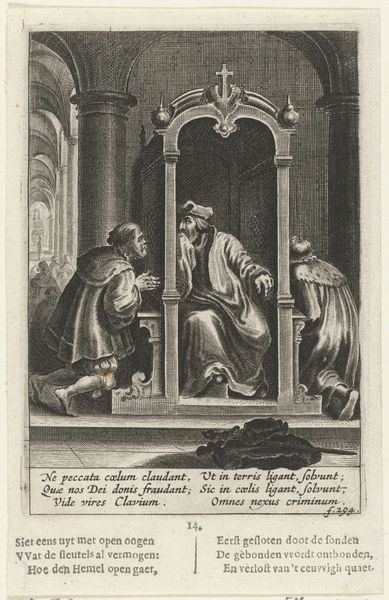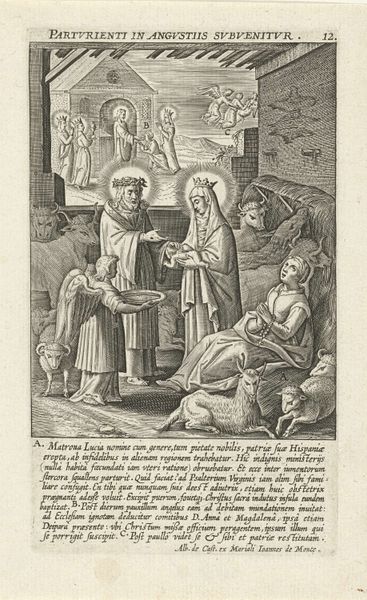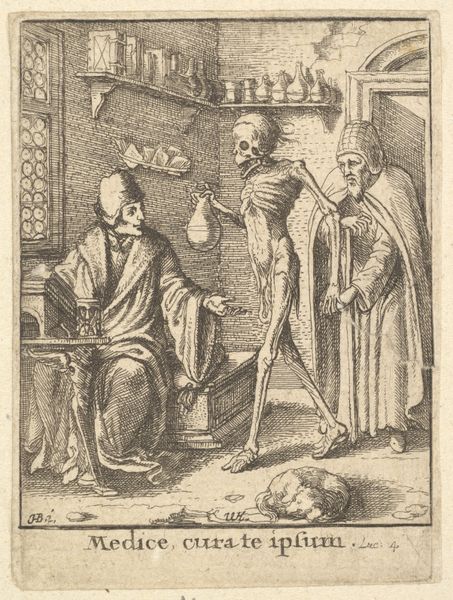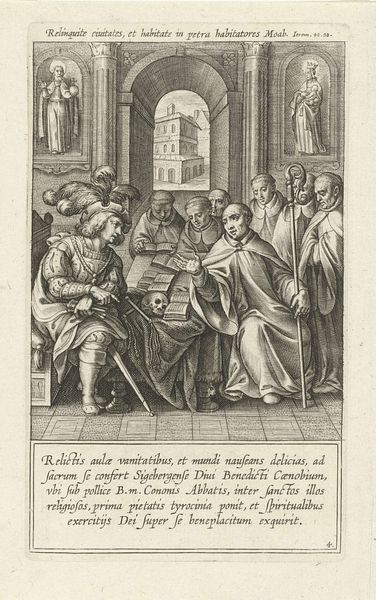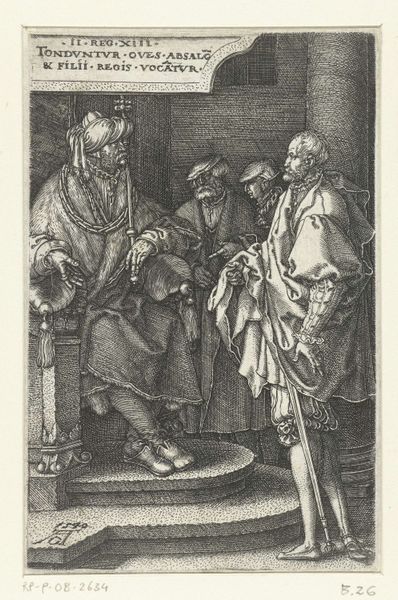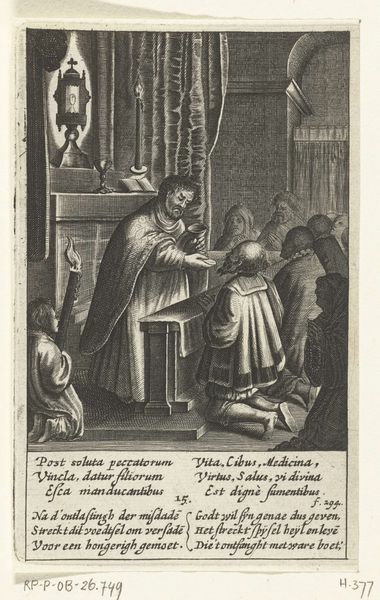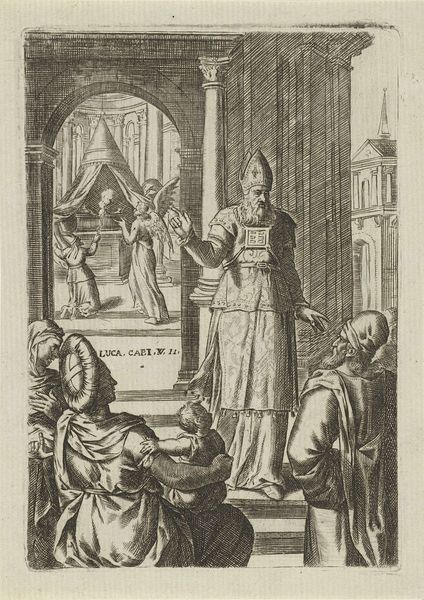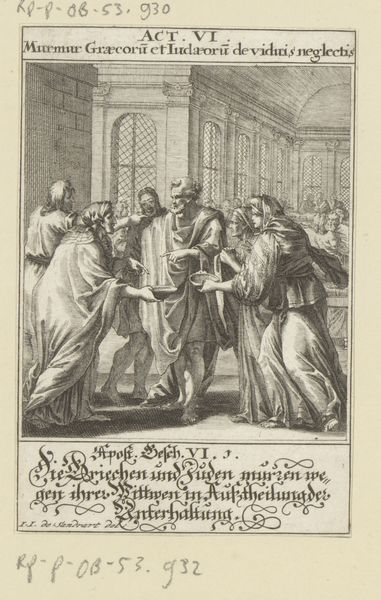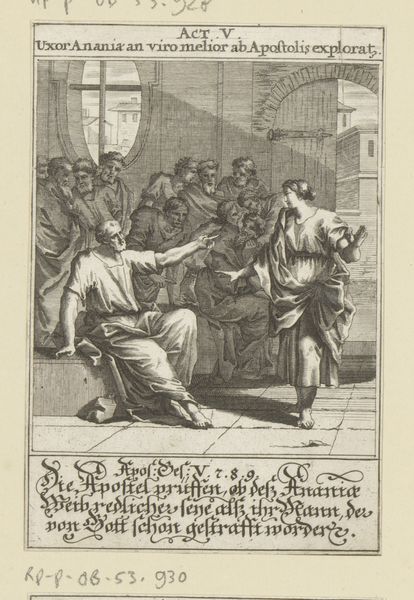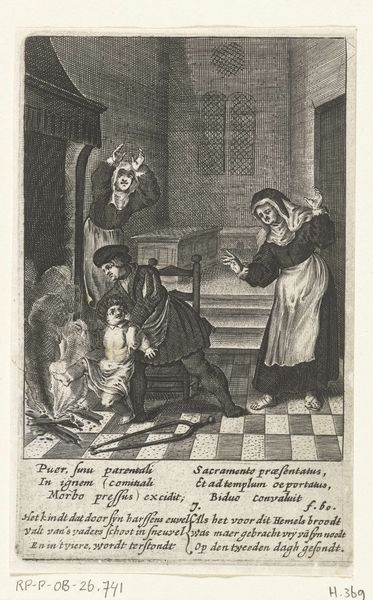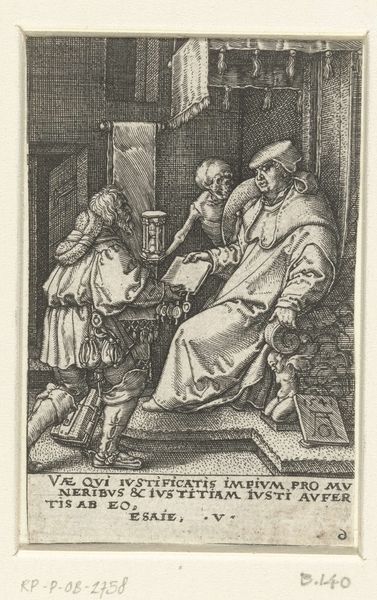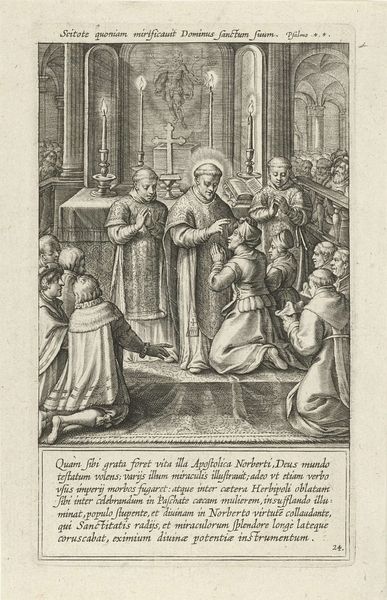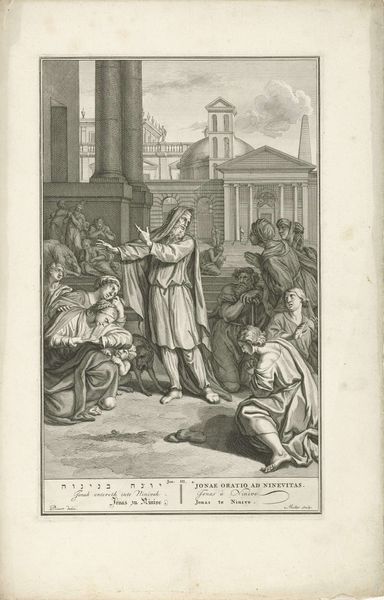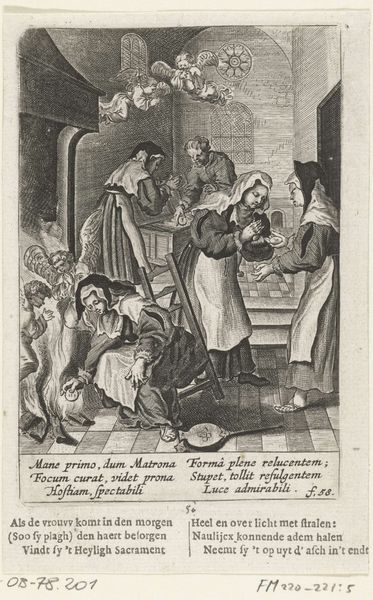
print, etching, intaglio, engraving
#
baroque
# print
#
pen illustration
#
etching
#
intaglio
#
old engraving style
#
history-painting
#
engraving
Dimensions: height 133 mm, width 85 mm
Copyright: Rijks Museum: Open Domain
Editor: This engraving, “Priester neemt de biecht af,” which I believe translates to "Priest hearing confession", created sometime between 1590 and 1639 by Boëtius Adamsz. Bolswert, has such a somber and weighty feel to it. What resonates most with you when you look at this scene? Curator: What I see here is a potent symbol of human vulnerability and the cultural power imbued in religious rituals. The act of confession, rendered in such stark detail, speaks to a deep-seated need for absolution, a desire to unburden oneself. Look at the architecture – the confession box itself acts as a visual barrier, but it is also a symbolic bridge. Editor: A bridge, how so? Curator: Yes, bridging the individual’s internal world with the external authority of the Church. Consider the penitents kneeling – their postures of supplication, faces obscured, suggesting shame and humility. In contrast, the priest within the confessional occupies a higher, more visually prominent position, radiating the authority to absolve sins. Editor: So the figures represent a larger play between the earthly and spiritual, where the priest acts as the mediator. Curator: Exactly. The confessional is more than just a piece of furniture; it's a stage for a crucial moment in the drama of faith. The symbolic exchange suggests layers of psychological weight transferred from the kneeling supplicants towards the seated clergyman, speaking to societal structures in Baroque era Europe. What do you make of the printed inscription below? Editor: The verses touch on the power of absolution, which connects to this whole performance you described. It highlights that, through confession, one's connection with the divine is restored, opening the gates to Heaven. Curator: A powerful visual and textual statement of faith and penitence, offering insights into cultural memory. I leave with a sense of its continuous, lasting appeal across diverse audiences over long spans of time. Editor: I see that continuity now, so fascinating! This makes me think about the importance of understanding symbols and rituals throughout different time periods.
Comments
No comments
Be the first to comment and join the conversation on the ultimate creative platform.
